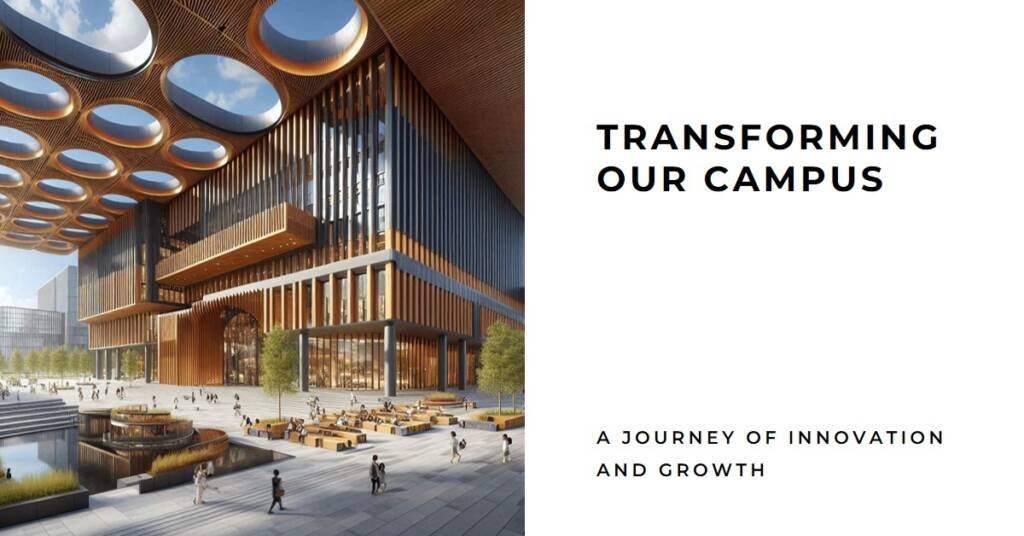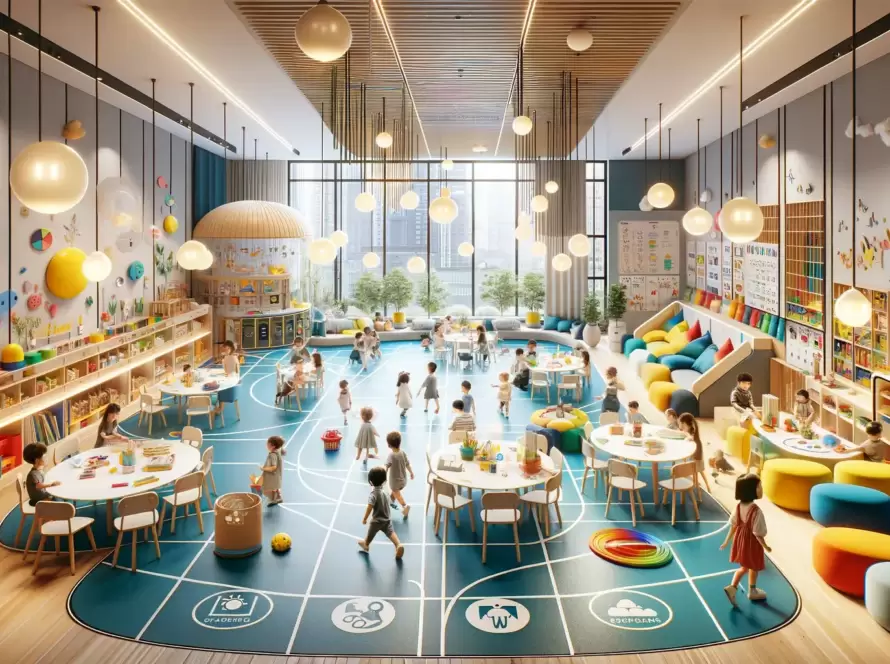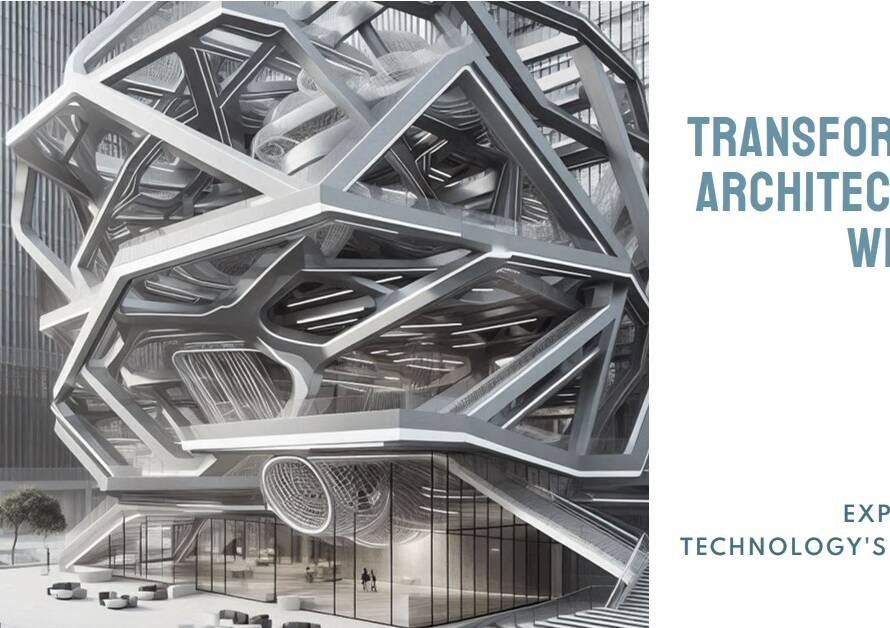
Table of Contents
- Introduction to Northeastern Illinois University
- The Vision Behind Campus Transformation
- Overview of JGMA as the Design Partner
- Key Features of the Campus Transformation
- Sustainability in Design
- Community and Student Involvement in the Transformation Process
- Impact of the Transformation on Student Life
- Challenges Faced During the Transformation
- Looking to the Future: Long-Term Vision for NEIU
Introduction to Northeastern Illinois University
Northeastern Illinois University (NEIU) was established in 1867 and has since evolved into a prominent institution of higher education serving a diverse and dynamic student population. Located in Chicago, NEIU is known for its strong emphasis on accessibility and community engagement, catering primarily to non-traditional students. Its mission centers around fostering a supportive environment that champions diversity and inclusivity, making it a vital entity within the educational landscape.
The university was founded as a normal school, a designation reflecting its initial focus on teacher education. Over the years, NEIU has expanded its academic offerings to include a variety of undergraduate and graduate programs spanning disciplines such as arts, sciences, business, and education. This evolution underscores the institution’s commitment to addressing the changing needs of society, thereby enhancing its role as a cornerstone in the region’s educational framework.
NEIU prides itself on being a multicultural institution, as evidenced by its student body which comprises individuals from various racial, ethnic, and socioeconomic backgrounds. This diversity enriches the educational experience and aligns with the university’s mission to cultivate an inclusive atmosphere. The faculty is equally committed to reflecting the community’s diversity, offering students a range of perspectives and mentorship opportunities. NEIU’s emphasis on serving underrepresented and first-generation college students highlights its dedication to making higher education accessible.
In this context, the campus transformation of NEIU emerges as a significant development that not only enhances the physical environment but also aligns with the university’s mission of fostering an inclusive and engaging educational experience. The investments made into improving campus facilities are tailored to support the diverse needs of its students and to reinforce the integral role NEIU plays within the broader educational community.
The Vision Behind Campus Transformation
The transformation of Northeastern Illinois University (NEIU) is a significant initiative aimed at revitalizing its physical campus in alignment with its strategic aspirations. The underlying vision is to create a contemporary, inclusive, and functional learning environment that caters to the diverse needs of students and faculty. Central to this endeavor is the commitment to enhance educational experiences while fostering an atmosphere where all community members feel welcomed and engaged.
The objectives of the campus transformation project reflect the university’s dedication to progressive education and community involvement. By prioritizing modern infrastructure and adaptive learning spaces, NEIU aims to equip its students with the tools and resources necessary for success in a rapidly changing world. The transformation also seeks to align with the university’s broader strategic plan, which emphasizes educational accessibility, sustainability, and collaboration.
Stakeholder input played a crucial role in defining the vision for the campus transformation. By engaging students, faculty, alumni, and community members, NEIU ensured that the transformation reflects a collective ambition for growth and development. This participatory approach has allowed the university to harness diverse perspectives, enriching the design and functionality of the campus facilities. Listening to stakeholders has been pivotal in identifying essential features such as multifunctional spaces that promote dynamic learning and social interaction.
As NEIU moves forward with its campus transformation, the focus remains on fostering an environment that nurtures growth, creativity, and collaboration among its users. Through this project, the university is not only reinvigorating its physical space but also reaffirming its commitment to the academic and social development of the diverse student body it serves. This vision, rooted in inclusivity and modernization, is set to greatly enhance the overall educational experience at NEIU.
Overview of JGMA as the Design Partner
Juan Gabriel Moreno Architects (JGMA) is a renowned architecture firm that has established a strong reputation for its innovative and community-centered design approach. Founded by architect Juan Gabriel Moreno, JGMA prioritizes a collaborative methodology that not only emphasizes aesthetics but also addresses the cultural and social context of each project. This philosophy aligns closely with the mission of Northeastern Illinois University (NEIU), as the university seeks to create an inclusive and engaging environment for its diverse student body.
The firm has a rich portfolio bolstered by numerous educational projects that reflect its commitment to creating spaces that foster learning and community interaction. JGMA’s notable works include the transformation of urban spaces into vibrant educational hubs, characterized by their ability to adapt to the changing needs of students and faculty alike. Their previous engagements in the education sector are a testament to their expertise in creating functional yet inspiring learning environments. Through these projects, JGMA has demonstrated an ability to integrate sustainability with innovative design, further reinforcing their role as a forward-thinking architectural partner.
In the context of the campus transformation at NEIU, JGMA is poised to implement a design strategy that embodies the university’s values of access, diversity, and academic success. The firm’s emphasis on inclusivity and user-centered design ensures that every aspect of the campus revitalization will resonate with the needs of the students and the community. Incorporating elements that cater to both functionality and aesthetics, JGMA aims to create spaces that not only meet educational requirements but also enhance the overall campus experience. The partnership between NEIU and JGMA reflects a shared vision of fostering an enriched academic environment where innovation thrives.
Key Features of the Campus Transformation
The transformation of Northeastern Illinois University’s campus, driven by JGMA, has introduced a range of innovative features aimed at enhancing the educational environment and overall functionality. One of the most significant aspects is the introduction of new building designs that prioritize modern architecture while providing flexible learning spaces. These buildings are meticulously designed to foster collaboration among students and faculty, featuring open layouts that encourage interaction and group work.
In addition to new structures, the incorporation of green spaces plays a vital role in the campus transformation. Thoughtfully designed parks and gardens not only beautify the campus but also create areas for students to relax and engage in outdoor learning activities. These green spaces contribute to the sustainability goals of the university, serving as vital ecosystems that improve air quality and provide habitats for local wildlife. This commitment to sustainability reflects a broader trend in education, aiming to instill environmental consciousness among students.
An important aspect of the transformation is the integration of advanced technological upgrades. Classrooms are equipped with state-of-the-art audiovisual equipment and interactive tools that enhance the learning experience. The upgraded infrastructure, including high-speed internet access throughout the campus, ensures that students and faculty are connected and capable of utilizing digital resources effectively.
The aesthetic elements incorporated into the campus design also contribute to creating a welcoming atmosphere. Features such as art installations, community gathering spaces, and visually appealing pathways enrich the campus experience for everyone. These enhancements not only improve functionality but also create a vibrant campus culture that invites engagement and interaction among all stakeholders.
Altogether, these key features of the campus transformation at Northeastern Illinois University reflect a holistic approach to improving student experiences, fostering collaboration, and promoting a functional yet inviting learning environment.
Sustainability in Design
The campus transformation at Northeastern Illinois University (NEIU) exemplifies a dedicated approach to sustainability in design, reflecting an acute awareness of environmental challenges and the responsibilities faced by educational institutions. The project, spearheaded by JGMA, integrates innovative strategies aimed at reducing the ecological footprint while fostering an environment conducive to learning and social engagement.
Central to this initiative is the careful selection of building materials. JGMA has prioritized the use of sustainable resources that not only adhere to established green building standards but also minimize environmental impact during the construction process. Materials that are locally sourced and recycled are favored, demonstrating the commitment to reducing carbon emissions associated with transportation and raw material extraction. Furthermore, the incorporation of durable finishes ensures longevity, thereby reducing the need for frequent renovations and resource consumption over time.
Energy efficiency is another cornerstone of the design ethos at NEIU. The buildings are equipped with state-of-the-art energy-efficient systems that optimize heating, cooling, and lighting. These systems include advanced insulation techniques and smart technologies that adjust energy usage based on occupancy and time of day. Such measures not only lower operational costs for the university but also serve as educational tools for students and the community, showcasing the importance of responsible energy consumption.
In addition to these architectural innovations, green spaces play a significant role in the campus design. The inclusion of green roofs, rain gardens, and native landscaping not only enhances biodiversity but also provides educational opportunities regarding local ecosystems and environmental stewardship. These spaces encourage interaction with nature, educating students on the importance of maintaining healthy ecosystems while serving as a respite for the campus community.
NEIU’s commitment to sustainability reflects a broader trend in higher education and underscores the critical importance of fostering an environmentally conscious mindset among future leaders. Through this transformative journey, both the university and JGMA demonstrate that sustainable design is not merely a choice, but a responsibility that encompasses the future of education and community well-being.
Community and Student Involvement in the Transformation Process
The transformation of Northeastern Illinois University (NEIU) is a product of significant engagement with both the student body and the local community. Recognizing the importance of inclusivity, the university employed various methods to gather feedback and insights that would shape the renovation and expansion of its campus facilities. Central to this strategy were surveys distributed to students, staff, and community residents, which provided an opportunity for stakeholders to express their priorities and preferences regarding the transformation.
Public forums served as another critical method of engagement. These gatherings allowed participants to voice their opinions in a structured environment, promoting dialogue around the proposed changes and gathering diverse perspectives. By fostering an open atmosphere, NEIU could better understand community expectations and ensure that their vision would align with the aspirations of both students and local residents. Additionally, workshops were organized to facilitate deeper discussions, allowing participants to actively collaborate on potential solutions and improvements.
This multi-faceted approach to stakeholder involvement was not merely a procedural exercise; it fundamentally shaped the project’s trajectory. As a result of this extensive feedback, the university was able to prioritize specific needs, such as enhanced accessibility, sustainable design, and facilities that support collaborative learning experiences. These outcomes illustrate the profound impact of community and student involvement in architecture and campus planning.
By actively engaging with their constituents, NEIU demonstrated a commitment to being responsive and adaptable to the changing landscape of higher education. This collaborative process not only fostered a sense of belonging among students and community members but also reinforced the university’s core values of inclusivity and responsiveness. Moving forward, the lessons learned from this transformation will be crucial in guiding future initiatives within the university.
Impact of the Transformation on Student Life
The campus transformation at Northeastern Illinois University (NEIU) holds promising implications for the student experience, as it aims to enhance not only academic programs but also extracurricular activities and social interactions among students. With the introduction of state-of-the-art facilities, the learning environment will become more conducive to collaboration and innovation. By fostering spaces that cater to diverse learning styles and preferences, students are expected to be more engaged with their coursework, ultimately improving their academic performance and motivation.
Moreover, the redesigned campus will contribute significantly to extracurricular activities. With dedicated areas for student organizations, arts, and performance, students will have increased opportunities to participate in various clubs and events. This involvement can lead to a more vibrant campus culture, encouraging students to forge connections and friendships outside of the classroom. Enhanced social spaces such as lounges, outdoor areas, and recreational facilities will promote a sense of community, fostering relationships that may extend beyond their time at NEIU.
The anticipated transformation also addresses student retention, a critical aspect of institutional success. By creating an engaging and supportive environment, NEIU aims to increase student satisfaction. When students feel a strong connection to their campus and peers, their likelihood of persisting through their studies improves. This transformation is likely to attract a broader array of prospective students who value a dynamic campus life, ultimately contributing to the university’s mission of providing a student-centered educational experience.
In conclusion, the campus transformation at NEIU is set to profoundly impact student life by enhancing academic rigor, promoting extracurricular involvement, and strengthening community bonds. Through these developments, students can expect a more fulfilling collegiate experience that supports personal growth and academic success.
Challenges Faced During the Transformation
The transformation of the Northeastern Illinois University (NEIU) campus, led by JGMA, presented a myriad of challenges that required careful navigation and strategic problem-solving. One of the primary obstacles was budget constraints, which often dictate the scope and quality of any large-scale project. As the preliminary assessments began, it became evident that original cost estimates needed re-evaluation to align with the university’s financial capabilities. This required frequent adjustments and a renewal of focus on resource allocation, ensuring that every dollar spent contributed effectively to the transformation goals.
In addition to financial limitations, the transformation process was further complicated by tight timelines. NEIU aimed to complete the renovation and development in a timeframe that would minimize disruption to academic activities. To address this challenge, JGMA implemented a phased approach, allowing certain areas to be completed while others remained operational. This strategy required meticulous planning and coordination among contractors, staff, and university stakeholders to ensure a seamless transition from one phase to the next.
Logistical issues also posed significant challenges throughout the project. Coordinating construction activities on a live campus environment necessitated innovative solutions to avoid conflicts with ongoing academic schedules and events. JGMA worked closely with NEIU to develop a robust communication strategy, keeping all stakeholders informed of progress and any necessary adjustments. This transparency fostered a collaborative atmosphere where concerns could be addressed promptly, and solutions were developed collectively. The transformation of the NEIU campus illustrates the complexities inherent in such expansive projects, highlighting the importance of adaptability and effective stakeholder management in overcoming unforeseen circumstances.


Looking to the Future: Long-Term Vision for NEIU
Northeastern Illinois University (NEIU) stands at the precipice of an exciting future as it embraces a long-term vision shaped by its recent campus transformation. This reimagining of the physical space is just one aspect of a broader strategy aimed at fostering academic excellence and enriching the student experience. As NEIU moves forward, several key projects and initiatives are on the horizon, all designed to enhance the university’s role in the community and boost its educational offerings.
One of the primary focus areas in this vision is the integration of state-of-the-art technology across campus. As educational methodologies evolve, NEIU is committed to developing smart classrooms, collaborative spaces, and cutting-edge research facilities that foster creativity and innovation. By investing in technological advancements, the university aims to provide students and faculty with tools that facilitate engaging, high-quality learning experiences.
Additionally, NEIU recognizes the importance of sustainable practices in its growth trajectory. Future projects will prioritize eco-friendly construction, renewable energy solutions, and green campus initiatives that not only reduce the university’s carbon footprint but also serve as a living laboratory for students studying sustainability and environmental science. The commitment to sustainability is vital for preparing students to address contemporary challenges related to climate change and resource management.
Moreover, community engagement will remain a cornerstone of NEIU’s future development plans. The university is dedicated to maintaining strong partnerships with local organizations, businesses, and stakeholders, ensuring that its initiatives reflect the needs and aspirations of the community. Ongoing dialogue with these partners will be crucial in adapting to changing educational landscapes and workforce demands.
As NEIU embraces these forward-looking plans, the groundwork laid by the campus transformation will ensure continued growth and innovation, positioning the university as a leader in higher education in the years to come.



